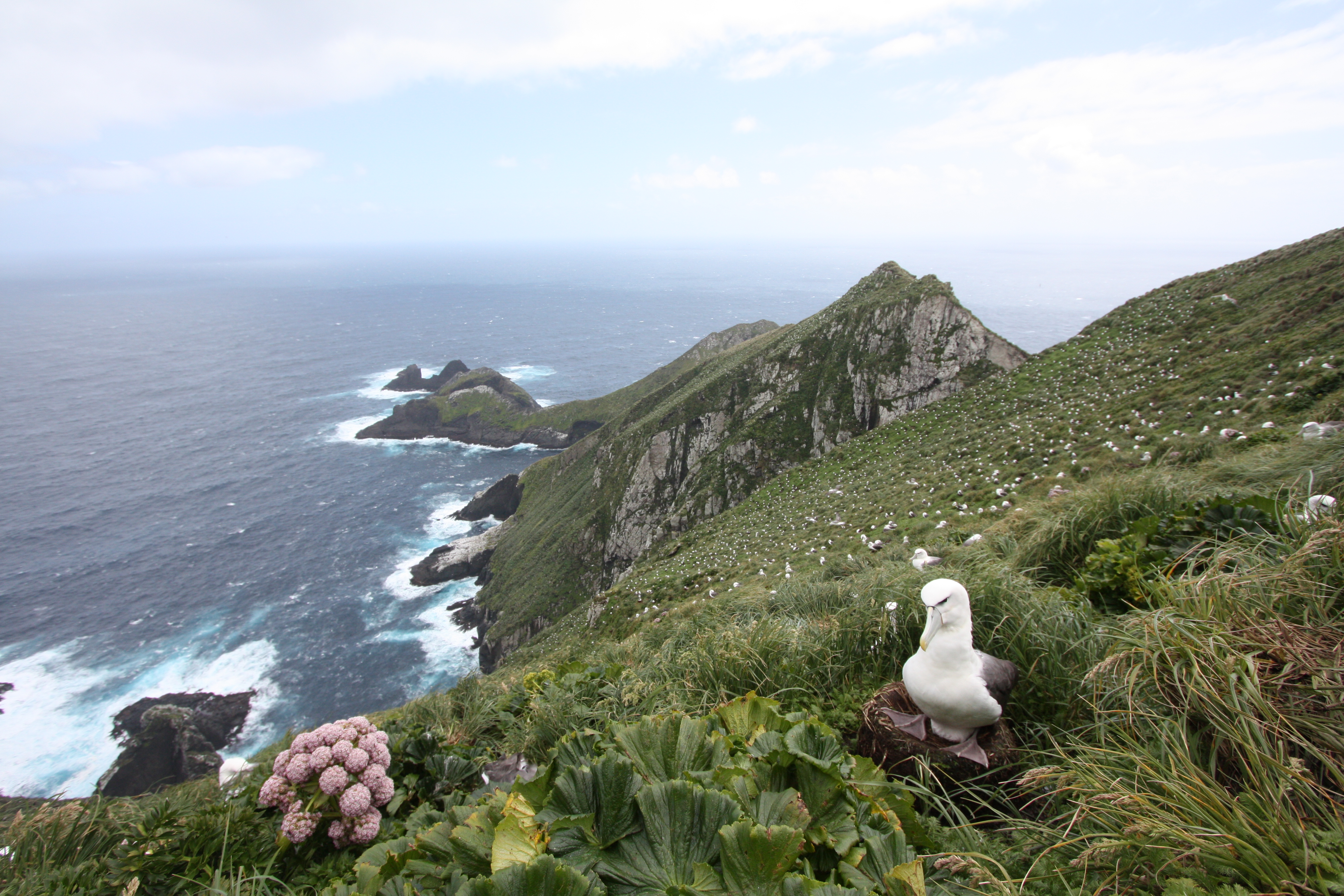
Barry Baker (Institute of Marine and Antarctic Studies, University of Tasmania, Hobart, Australia) and colleagues have published open access in the journal Emu-Austral Ornithology, on the results of a 12-year population study of White-capped Albatrosses breeding on New Zealand’s Auckland Islands.
The paper’s abstract follows,
“White-capped Albatrosses Thalassarche steadi breed only on New Zealand’s sub-Antarctic islands, principally the Auckland Islands. The species is commonly caught as bycatch in global longline and trawl fisheries, and it has been estimated that 8 000 birds are killed each year. In December or January between 2006 and 2017 we undertook annual population censuses of the White-capped Albatrosses breeding at the Auckland Islands using aerial photography. Estimated annual counts for the three breeding sites were adjusted using estimates of the proportion of birds clearly not associated with an active nest (loafers), to estimate annual breeding pairs for each breeding season. The estimated mean number of annual breeding pairs in the Auckland Islands during this period was 89 846 with high inter-annual variability (range: 74 031–116 025). Over the 12 years of the study adjusted counts for all sites combined showed a negative linear trend but this relationship was not statistically significant. Similar analyses using TRIM classified the population as ‘stable’. Given the estimated number of annual breeding pairs and the high frequency of biennial breeding it is likely that fisheries bycatch, if it has been estimated accurately, is impacting this population. Continuation of annual monitoring is recommended to increase the precision of the estimated population trend and help determine if the high levels of bycatch across multiple fisheries are sustainable in the long term.”
Reference:
Baker, G.B., Jensz, K., Cunningham, R., Robertson, G., Sagar, P., Thompson, D.R. & Double, M.C. 2023. Population assessment of White-capped Albatrosses Thalassarche steadi in New Zealand. Emu - Austral Ornithology. DOI: 10.1080/01584197.2022.2161915
6 February 2023

 English
English  Français
Français  Español
Español